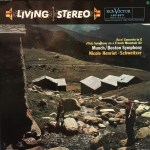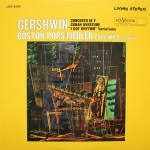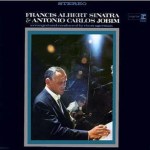 More of the Music of Steely Dan
More of the Music of Steely Dan
Reviews and Commentaries for the Music of Steely Dan
At least some of the thrills are here, and for any record on Chad’s label, that is really saying something.
Sonic Grade: B+ to A-
A few comments for the UHQR have been added since this went up on 4/4, now that I’ve had a chance to see the notes in full. I’ve noted the additions in brackets and sectioned some off as well.
Word from the listening panel is in, and they say the new Bernie Grundman mastered UHQR is actually not bad! [Not good, but not bad.]
The tonality is much closer to correct than a lot of the Heavy Vinyl LPs we’ve played recently. Oddly enough, instead of the EQ being overly smooth, in the way that appears to be all the rage these days, the tonality instead errs on the side of somewhat thinner and brighter than ideal. (One could also use the term “correct.”)
This should not be especially surprising. Bernie Grundman has been remastering Heavy Vinyl records since the mid-’90s. Overly smooth titles that he cut are hard to find, on the hundreds of titles he did for Classic Records or anywhere else. The more of his recent work I play, the more I have come to see his disastrously dull Giant Steps as an outlier.
The instruments where these tonality issues are most easily recognized are two that we have written a great deal about on this blog: pianos and snare drums.
The snare sound on the Brothers in Arms that Chris Bellman cut at Bernie Grundman Mastering has the same problem as this new Can’t Buy a Thrill. (Review with specifics coming, sorry for the delay, it has only been two years.)
The thin sounding piano on the Cisco pressing of Aja is likewise a common shortcoming we notice on many of the modern recuts we play.
With links to 29 titles to test for a correct piano sound, and 13 for the snare, the critical listener should be able to find some records in his own collection that will shed light on the problems we heard on Chad’s UHQR.
If your system errs on the side of fat and dark, Chad’s repress has what you need to “fix” the sound of the album. Instead of a murky piano, now you have a clear one. Instead of a too-fat snare getting lost in the mix, now you have a clear snare that you can more easily separate out from the other instruments.

Added 4/5
Note that we did not play all four sides. We felt sides one and three were enough to get an idea of how thrilling this pressing was going to be. We don’t get paid to play Heavy Vinyl pressings. We play them to help audiophiles understand their strengths and weaknesses. We hope that some audiophiles will hear what we have described and perhaps consider that there is a better way. That other way can be found in the bins of their local record store or, for those with deeper pockets, on our site. Either way, settling for the kind of sound found on these modern reissues is the one choice no one should be making.
We played the following four songs, and heard the sonic qualities described below:
- Do It Again
- Slightly sandy on the vocals and percussion. [Sandy typically refers to transistory, dry, grainy, or gritty sound.]
- Has space though.
- Not too congested and smeary. [A backhanded compliment, that.]
- Dirty Work
- Cymbals are bright.
- Vocals are a bit sandy.
- Has space.
- Reelin’ In The Years
- Voice is thin.
- Not very natural up top.
- Fire in the Hole
- A bit bright.
- Not harsh but missing some body.
The new version of Can’t Buy a Thrill is not a bad record. In fact, it’s the best ever released by Analogue Productions, as far as we know.
In the Washington Post video, I upset a lot of people by remarking that Chad has never made a good sounding record.
Let me now amend that to “Chad has made exactly one good [not actually good, more like decent] sounding record to our knowledge.”
That’s not really fair though. Maybe his version of Countdown to Ecstasy is good [or decent], can’t say it isn’t.
Our advice: Chad should fire all the other engineers he’s been hiring lately and just work with Bernie from now on. (The guy who cut this record should definitely not be rehired. When’s the last time he mastered a record that’s any better than passable?)
And if it takes six tries to get side one sounding right, then that’s how many times that side will have to be cut.
Matrix / Runout (Side A runout, etched): Bernie Grundman APP 134-45-A (RE-6)
Matrix / Runout (Side B runout, etched): Bernie Grundman APP 134-45-B (RE 3)
Matrix / Runout (Side C runout, etched): Bernie Grundman APP 134-45-C (RE 3)
Matrix / Runout (Side D runout, etched): Bernie Grundman APP 134-45-D (RE 3)
(Once Bernie figured out the kind of thinner, brighter sound that Chad liked for side one, sides two, three and four were a snap. They only took three tries.)
Allow me to make a point about that.
Bernie’s first five versions of side one might have been more to our liking; they might have been less thin and less bright. Whether they were or not is a mystery, and Bernie is certainly not going to be telling any tales out of school.
Added 4/5
Chad is clearly a guy who could be fooled by a thinner, brighter sound. The tonality of his records over the years has been, to be charitable, less than consistent. He doesn’t seem to be able to make up his mind what errors in tonality he prefers.
He used to like super-fat and tubey jazz records, and he hired Doug Sax to make some of those for him.
For a while he liked MoFi-like records, and he hired Stan Ricker to make some of those for him.
He hired Kevin Gray to make mediocrities like Quiet Kenny (review coming, but you can watch the Washington Post video to get the idea), and he hired George Marino to make a mess of Tea for the Tillerman.
If he’s hiring the best, as he likes to say he is, why all the second-rate and third-rate and just plain awful sounding records?
Of course, Bernie has made more than his share of bright records, too. Who is to blame for the shortcomings of Can’t By a Thrill? We’ll probably never know.
 Translating Our Grading Scale
Translating Our Grading Scale
The A Minus grade we awarded this UHQR is the highest grade we have ever given to a Heavy Vinyl pressing.
[No longer true: see here and especially here.]
How does that compare to our Hot Stamper grades, you ask? The best way to look at our grades is to compare them to the grades you might have gotten in school, assuming you got some A’s.
White Hot is A Triple Plus (A+++). That would be the equivalent to a normal grade of A+, something like 97 or better out of 100.
Super Hot is A Double Plus (A++). That would compare to a normal grade of A, 94 to 96 out of 100.
Hot is A with One Plus or One and a Half Pluses (A+ or A+ to A++). That would compare to a normal grade of A-, 90 to 93 out of 100.
We stopped listing One Plus pressings years ago. The lowest rated records you can find on our site these days are Hot Stampers with One and a Half Pluses, graded A+ to A++.
This UHQR would be close to, and perhaps even the equal of, a Hot Stamper of this grade, assuming you have the cleaning machinery and fluids that we use. (If not, the sonic grade would have to be lowered by half a plus at least, maybe even a full plus. We discuss that here.)
[This UHQR, with grades that averaged less than One and a Half Pluses, would not be a record we would want to offer our customers.]
However, we have played some records that might make the cut.
I would give the Bellman cutting of Brothers in Arms about the same grade [probably a better grade], and the Zep II Jimmy Page put out in 2014 as well [ditto].
This Coltrane title cut by Bernie would also probably earn that grade. [Again, a better grade than the UHQR.]
All of this assumes that the copy you buy sounds as good as the copy we auditioned, of course, something that cannot be assumed but could be tested, I suppose, by buying more than one copy of the UHQR. Anybody want to give that a try?
Added 4/5
Here’s a better idea. Buy every black label ABC copy you see that looks good. No record club copies. No imports. Just original domestic pressings. Clean a bunch of them up and play them. They will show you what is missing from the UHQR.
For some reason, UHQR stands for Ultra High Quality Record. It’s a classic case of an audiophile label overpromising and underdelivering. Does nothing in the world of records ever change?
Yes, something in the world of records does change. Something has changed. Better Records and their Hot Stampers came along. They guarantee to sell you a dramatically better sounding copy of Can’t Buy a Thrill than anything you have ever heard, and if for any reason you are not happy, any reason at all, they give you all your money back.
Or you can get a fancy box with a pair of mediocre pressings of Can’t Buy a Thrill in it from Chad.
(more…)



 More of the music of Igor Stravinsky (1882-1971)
More of the music of Igor Stravinsky (1882-1971) More of the Music of Steely Dan
More of the Music of Steely Dan
 Translating Our Grading Scale
Translating Our Grading Scale More of the music of Maurice Ravel (1875-1937)
More of the music of Maurice Ravel (1875-1937)


